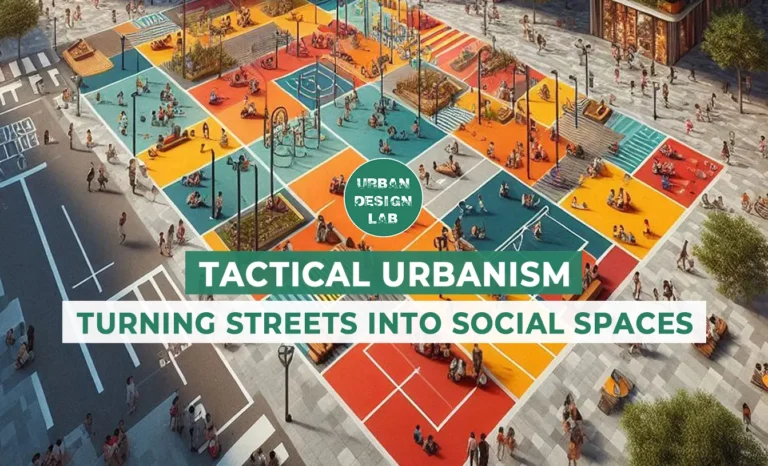
What is Urban Design?
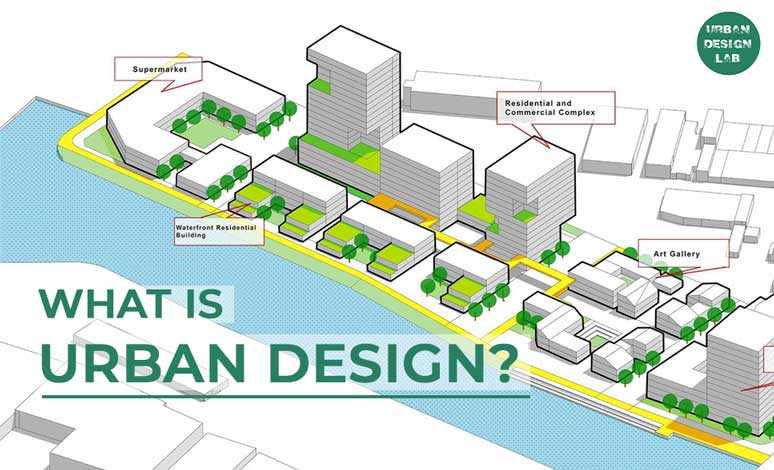
Urban design is the process that involves creating buildings, groups of buildings, spaces, and landscapes, as well as establishing frameworks and procedures that will ensure success for future generations. Town and city planning, street design, and public space design are all parts of urban design. In essence, it’s about composing the physical setting for life by bringing together multiple disciplines – the art of making places.
UDL Thesis Publication | 2023
Curating the best Graduate Thesis Projects Globally!
Register Now | Submit Later
Importance of Urban Design
The field of urban design is important because it strengthens in the planning and development of livable and workable surroundings. Urban designers are hired by governments and commercial businesses to improve public spaces such as homes and community centres. Urban design does have the potential to significantly improve the stature and value of space, so boosting the local economy, attracting tourists, and improving the quality of life for residents. Additionally, urban designers are significant because they encourage sustainability through ecologically sensitive building and technology. They can also have an impact on a community’s sociological and cultural makeup by fostering participation and communication between people.
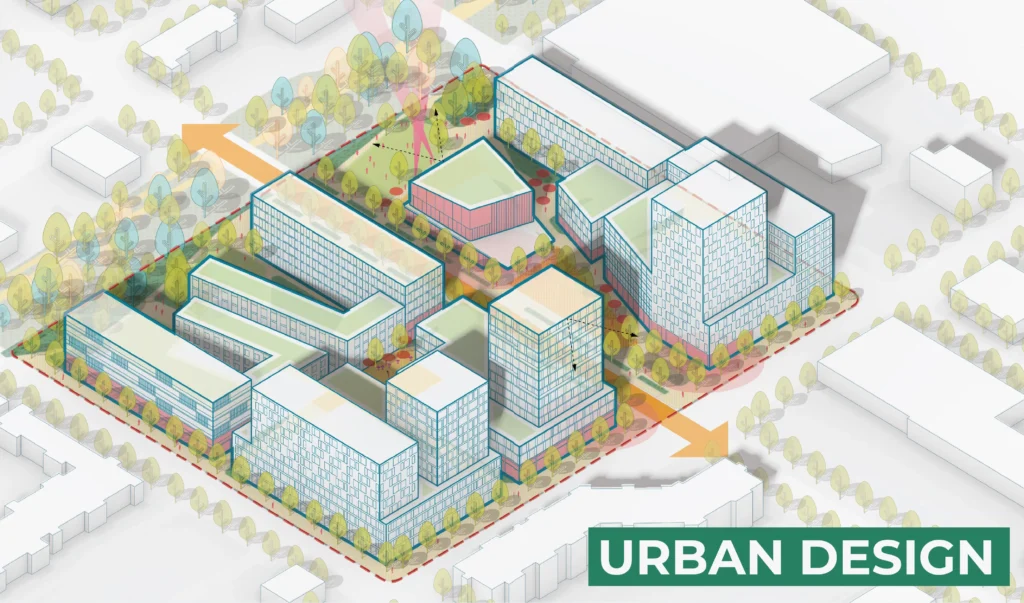
Urban design can significantly influence the economic, environmental, social and cultural outcomes of a place:
Economic Impact of Urban Design
Urban design plays a crucial role in determining the economic success and socio-economic composition of a community. It influences whether local businesses and entrepreneurship can thrive, attracts residents, and ensures housing and transportation remain affordable. Additionally, it shapes equitable access to job opportunities, services, and essential amenities, which are fundamental to creating inclusive, economically diverse urban environments.
Balancing Built Environments and Natural Ecosystems
The spatial layout and physical atmosphere of urban spaces are shaped by urban design, which defines how built environments coexist with natural ecosystems. This balance is vital to achieving sustainable urban outcomes, as it governs the relationship between infrastructure and ecological health. Sustainable urban design integrates green spaces, promotes walkability, and prioritizes the preservation of natural environments alongside urban growth.
Social and Cultural Influence of Urban Spaces
Urban design deeply affects social interaction and cultural engagement within a community. The design of public spaces, mobility options, and spatial connectivity directly shapes how people interact with one another and participate in communal life. Thoughtful urban planning fosters vibrant, well-connected spaces that promote public health, social cohesion, and a strong sense of identity.
Urban Design as an Evolving Process
Urban design is not a finite project; rather, it is a long-term, evolving process that reflects the continuous interaction of infrastructure, natural ecosystems, and community culture. Over time, this layering imparts unique characteristics and identities to urban areas. Acknowledging urban design as an ongoing practice ensures that cities remain adaptable, resilient, and capable of addressing future challenges while maintaining their distinct character.
ELEMENTS OF URBAN DESIGN
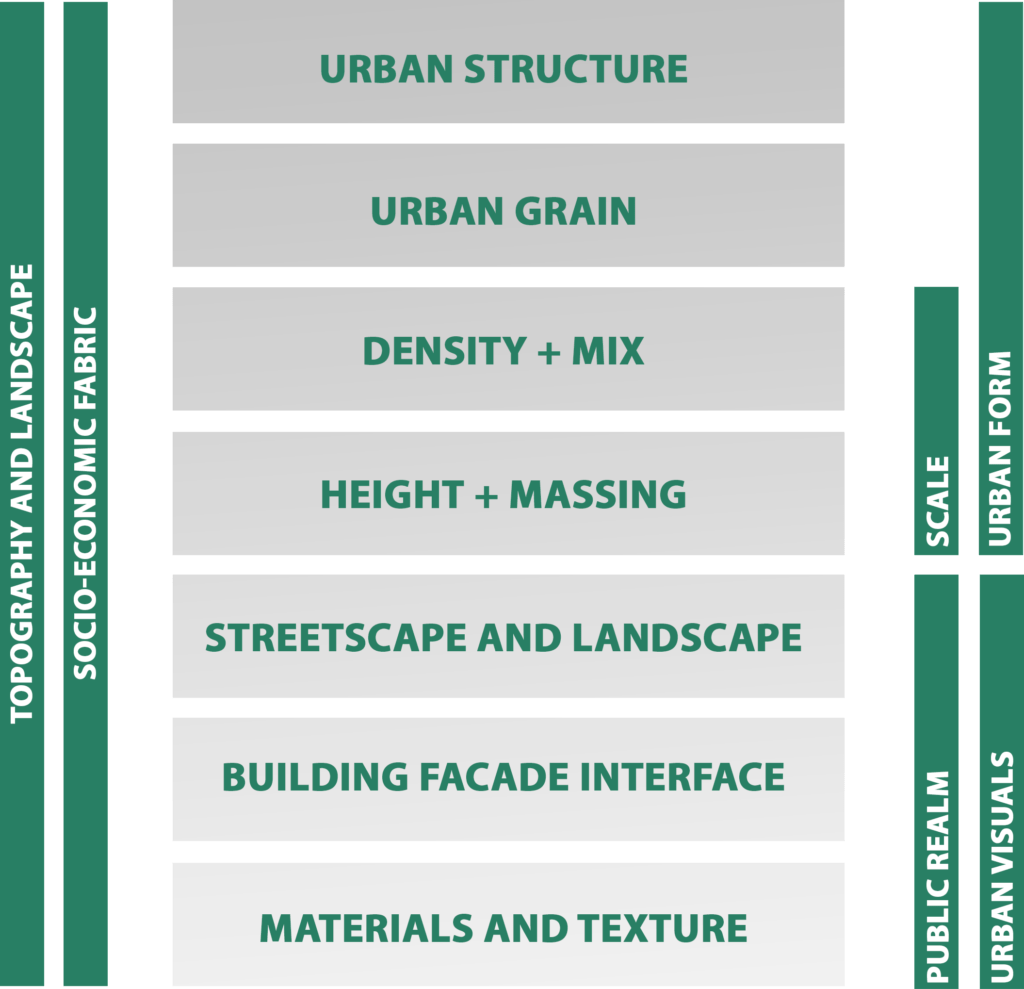
URBAN STRUCTURE
Urban structure refers to the spatial arrangement of land use within cities, shaping how various sectors—residential, commercial, and industrial—interact within the urban landscape. This configuration is not random; rather, it is the result of complex interactions between economic, social, and geographic factors. Urban planners, economists, and geographers have long studied and developed theories to explain the distribution of different populations, businesses, and institutions across metropolitan areas.
URBAN GRAIN
Urban grain refers to the intricate balance between open spaces and built forms, as well as the subdivision of areas into smaller parcels or blocks. This concept is crucial in shaping the physical structure of cities, determining the layout, accessibility, and movement within urban spaces. A “fine urban grain” is typically characterized by a dense network of smaller, detailed streetscapes, contributing to a more walkable and interconnected environment.
DENSITY + MIX
In urban design, density refers to the intensity of development, specifically the concentration of buildings, people, and activities within a given area. Higher density promotes efficient land use, reduces reliance on cars, and supports sustainable practices like walking and public transit. Mix refers to the range of different uses within an area—such as residential, commercial, institutional, and recreational—that are integrated to create diverse, multifunctional spaces. Together, density and mix foster vibrant, 24-hour communities that boost economic activity and social interaction. Research shows that well-designed, mixed-use developments not only enhance property values and public safety but also promote inclusivity, while reducing urban sprawl. This combination of density and mix creates dynamic, resilient, and sustainable urban environments that effectively address the needs of growing urban populations.
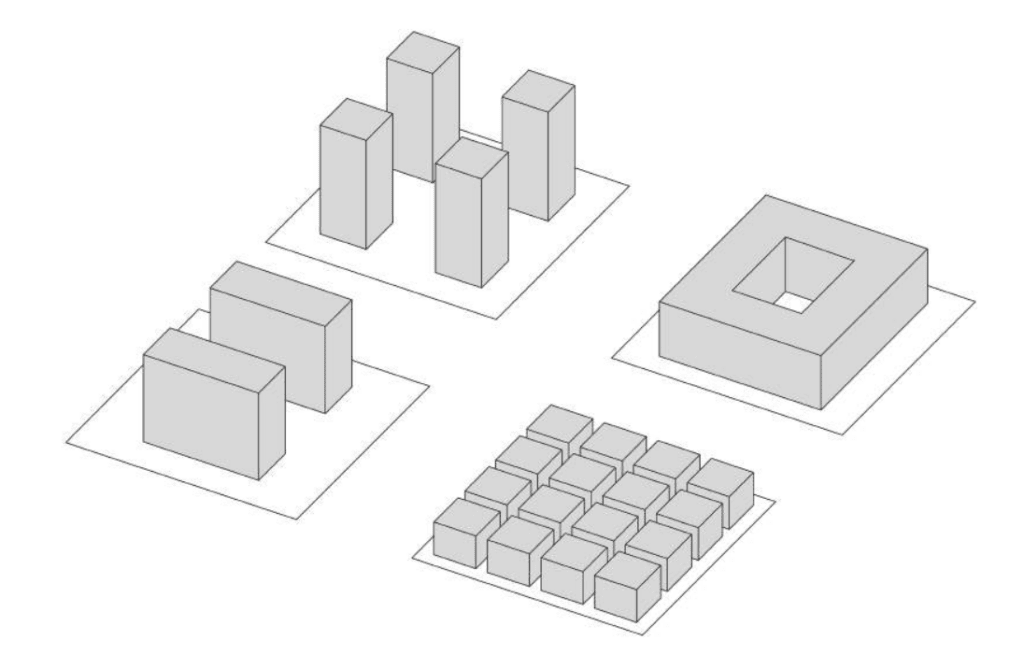
HEIGHT + MASSING
In urban design, height and massing refer to the scale and shape of buildings in relation to their height, floor area, and their integration with surrounding landforms, buildings, and streetscapes. Height and massing influence the sense of openness or enclosure within urban environments, shaping the character and feel of streets, public spaces, and neighborhoods. These elements also encompass the building envelope, site coverage, and solar orientation, which are critical in determining how sunlight interacts with buildings and open spaces. Thoughtful design of height and massing can enhance the livability and visual appeal of urban areas, ensuring that buildings relate harmoniously to their context while maintaining access to light, air, and views. Well-balanced height and massing contribute to the overall amenity of streets and public spaces, promoting walkability, a comfortable human scale, and a more engaging urban experience.
STREETSCAPE + LANDSCAPE
Streetscape and landscape are essential components of urban design that shape the aesthetic and functional qualities of public spaces, including streets, pathways, and open areas. Streetscape refers to the physical elements of streets, such as sidewalks, street furniture, lighting, and paving, while landscape focuses on the integration of natural elements like trees, plants, and green spaces. Together, they influence the microclimate by providing shading, improving air quality, and enhancing comfort in public areas. Thoughtfully designed streetscapes and landscapes create vibrant, walkable environments that encourage social interaction, promote sustainable urban living, and enhance the overall well-being of city residents. By incorporating features like shading, planting, and seating, these public spaces contribute to a more inviting, inclusive, and resilient urban fabric.
FACADE + INTERFACE
Facade and interface refer to the critical relationship between buildings and their surrounding context, including the site, street, and neighboring structures. The interface focuses on elements such as alignment, setbacks, and boundary treatments, which define how buildings connect with the public realm and create a sense of cohesion within the urban fabric. The facade emphasizes the architectural expression of buildings, incorporating design features like projections, openings, patterns, and materials that contribute to the visual identity and character of a neighborhood.
DETAILS + MATERIALS
The close-up appearance of objects and surfaces and the selection of materials in terms of detail, craftsmanship, texture, colour, durability, sustainability and treatment. It includes street furniture, paving, lighting and signage. It contributes to human comfort, safety and enjoyment of the public domain.
URBAN FORM
Urban form generally encompasses a number of physical features and non- physical characteristics including size, shape, scale, density, land uses, building types, urban block layout and distribution of green space. It is the The arrangement of a built up area. This arrangement is made up of many components including how close buildings and uses are together; what uses are located where; and how much of the natural environment is a part of the built up area.

Why does Urban Design matter?
Over the last 30 years, there have been significant changes in how urban growth and development are managed. The emergence of a post-industrial economy, the rise of the environmental movement, and the critique of top-down government decision-making in Europe and North America have necessitated new approaches to the design and building of urban settings, both theoretically and methodologically.
Traditional master plans are being phased out in favour of more strategic plans and ‘urban initiatives’ that develop critical locations in metropolitan areas. Cities’ politicians and civic leaders realise the need for high-quality urban and natural settings as they deal with the obsolescence of old industrial districts and face increased competition for knowledge workers. They are increasingly doing so in public-private partnerships with significant public engagement.
These economic and political transformations accelerated the rise of Urban Design in the fields of Architecture, Planning, and Landscape Architecture. Its growing prominence reflects a general recognition that human environments are inherently complex and diverse and the consequent need for design interventions to acknowledge local social, historical, and environmental contexts.
What sort of work does an Urban Designer do?
There really is no ‘typical’ Urban Design practitioner, nor is there a ‘standard’ set of skills that, once learned, can be mechanically applied for the rest of one’s career. There are, however, several tasks that are central to Urban Design in practice:
- Describing characteristics of and transformations in particular settlement patterns, including morphological and typological studies;
- Examining the operative relationships linking power, politics, and the form of cities and urban areas;
- Exploring, analysing, and drawing conclusions related to the images and meanings people have of different urban environments; and
- Describing, interpreting, and shaping the built and natural environment of cities and metropolitan regions, for other professionals, decision-makers, and ‘lay’ populations.
Who are Urban Designers?
Urban designers are typically architects, town planners or landscape architects. Their skill is to bring together ideas from developers, local communities, architects, planners, traffic engineers, landscape architects, transport planners and many others, to resolve problems and conflicts in order to create better places for everyone. Sometimes this will result in new places being built or a new appreciation of existing urban areas in cities, towns and villages. Urban designers can be employed by developers, local planning authorities or community groups, including neighbourhood planning groups.
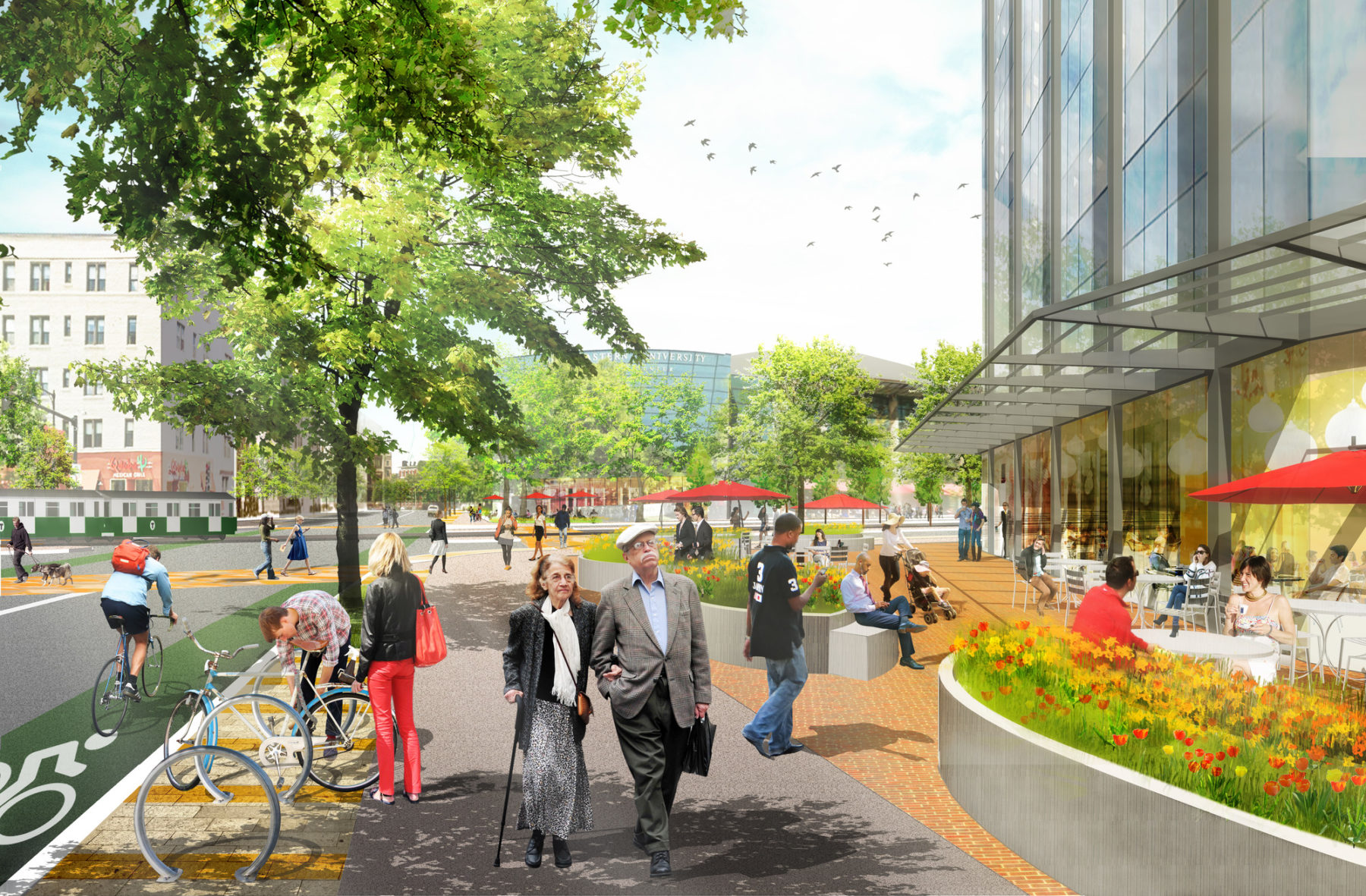
Careers in urban design
Urban design offers a diverse range of career opportunities that cater to various aspects of city planning, infrastructure, and community development. In addition to architecture, civil engineering, and city planning, here are several more career paths within the field:
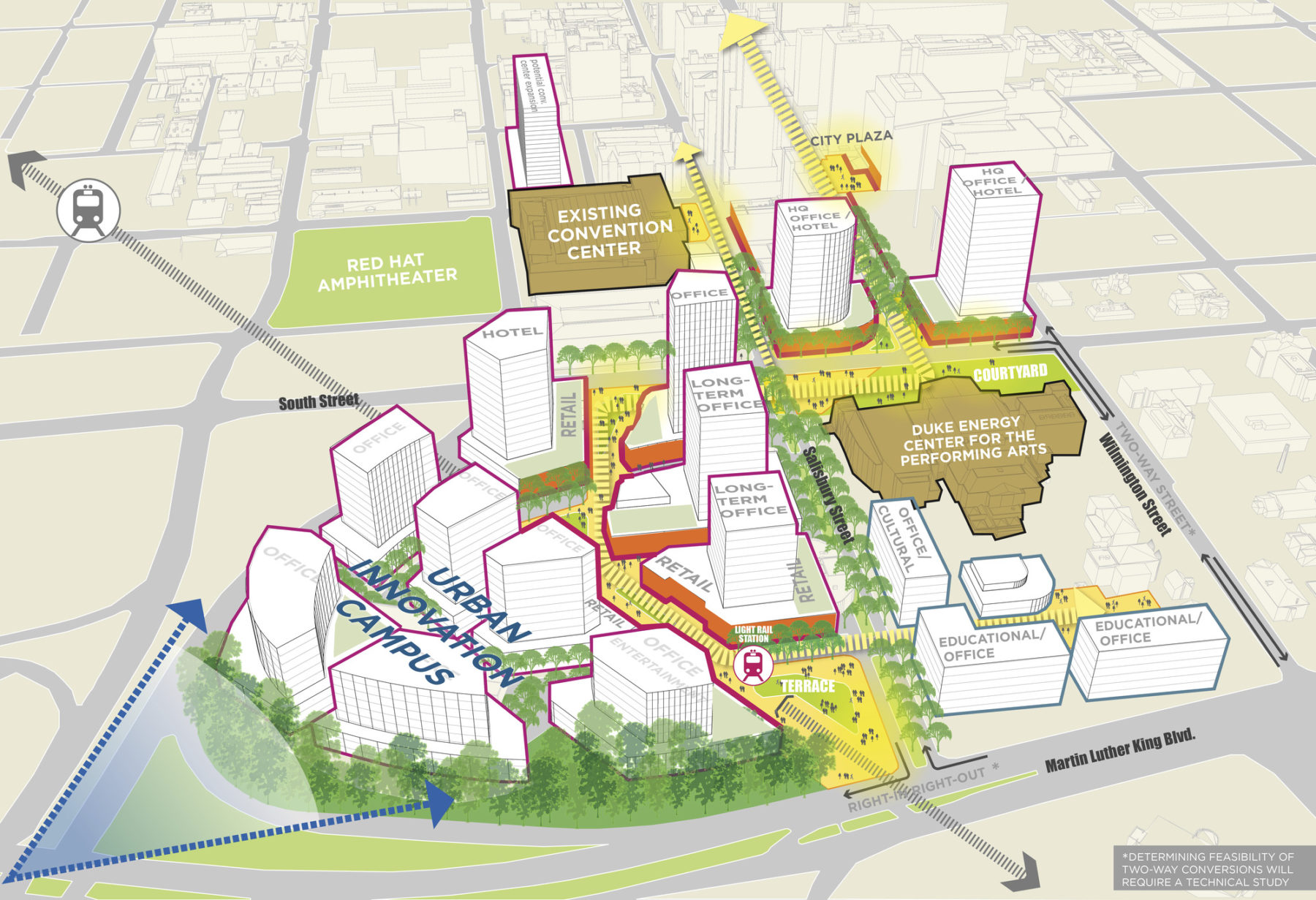
Landscape Architecture
Landscape architects design outdoor public spaces, including parks, plazas, and greenways, ensuring that natural elements are incorporated into urban environments. Their work involves balancing aesthetics, sustainability, and functionality to create spaces that enhance the quality of life for urban residents. They often collaborate with city planners, architects, and environmental specialists to address ecological challenges and improve urban biodiversity.
Transportation Planning
Transportation planners focus on designing efficient, sustainable, and safe transportation systems, including roads, public transit networks, bike lanes, and pedestrian pathways. They analyze traffic patterns, commuter needs, and urban growth trends to develop strategies that enhance mobility, reduce congestion, and promote environmentally friendly transportation options.
Urban Policy and Development
Urban policy specialists work within local governments or urban development agencies to create and implement policies that guide the growth and development of cities. They analyze demographic, economic, and environmental data to inform zoning laws, housing policies, and economic development plans. These professionals ensure that urban development aligns with long-term sustainability, equity, and community well-being goals.
Sustainability and Environmental Planning
Sustainability planners focus on integrating eco-friendly practices into urban development projects. They assess the environmental impact of construction and infrastructure, recommend green building materials, and design spaces that promote energy efficiency and resilience to climate change. These experts help cities reduce their carbon footprint and manage resources sustainably.
Urban Design Consulting
Urban design consultants provide specialized services to private developers, government agencies, and nonprofit organizations. They offer expert advice on how to optimize urban spaces through innovative design, zoning analysis, and infrastructure planning. Consultants help ensure that projects meet regulatory standards, community needs, and environmental goals while maintaining financial viability.
Historic Preservation and Conservation
Professionals in historic preservation focus on protecting and restoring historic buildings and landmarks. They work to maintain the cultural and architectural integrity of urban environments while incorporating modern infrastructure. This role often involves collaborating with architects, city planners, and government agencies to strike a balance between preservation and new development.
Real Estate Development
Real estate developers in urban design identify opportunities for residential, commercial, or mixed-use developments. They manage the financial, regulatory, and logistical aspects of property development, working closely with urban designers, architects, and city planners to ensure that projects contribute to the economic growth and sustainability of urban areas.
These career paths offer a wide range of opportunities for professionals to contribute to the design and development of cities that are sustainable, livable, and resilient. Whether working on large-scale infrastructure projects or creating vibrant public spaces, urban design careers are essential in shaping the future of urban environments.
UDL Thesis Publication | 2024
Curating the best Graduate Thesis Projects Globally!
Register Now | Submit Later

Urban Design Lab
About the Author
This is the admin account of Urban Design Lab. This account publishes articles written by team members, contributions from guest writers, and other occasional submissions. Please feel free to contact us if you have any questions or comments.
Related articles

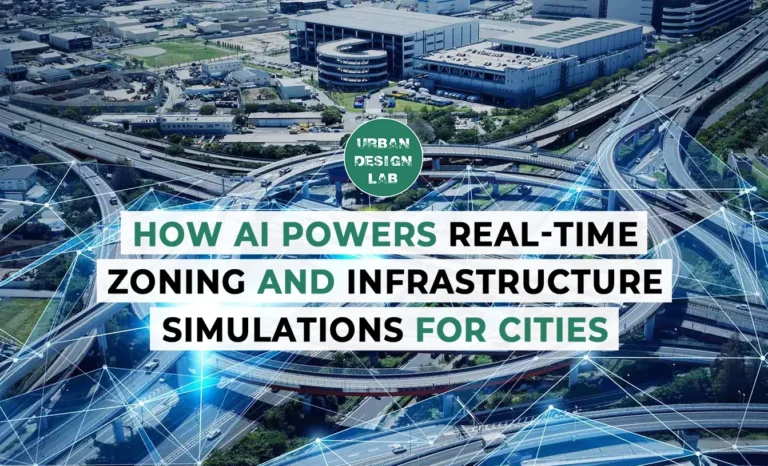
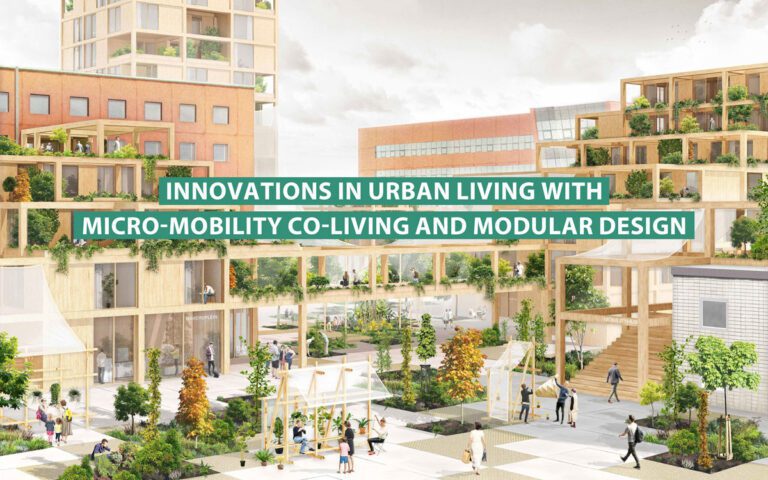
Micro-Mobility and Modular Design in Urban Living
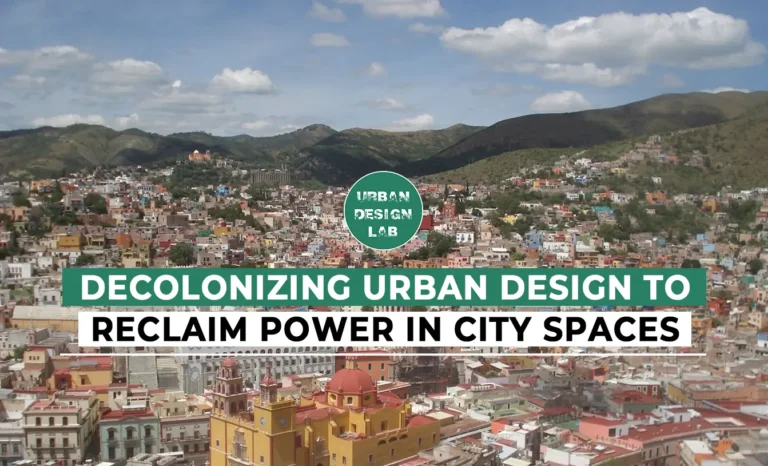

Rethinking Urban Planning Careers in India
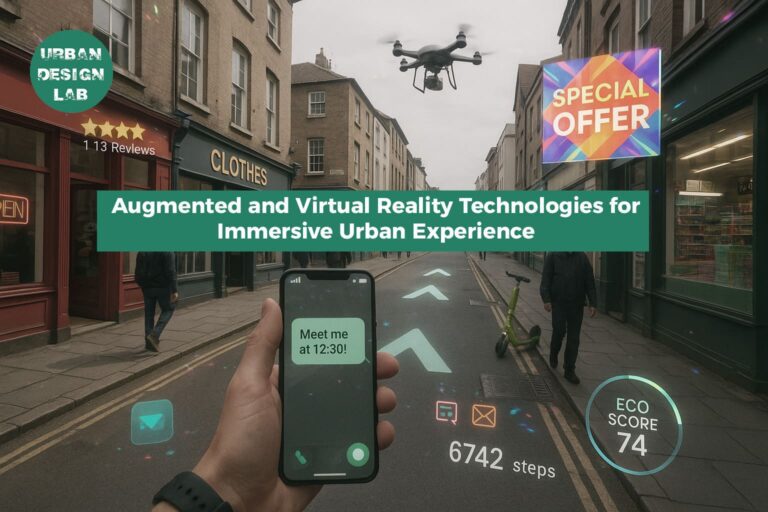
5-Days UDL GIS
Masterclass
GIS Made Easy – Learn to Map, Analyse, and Transform Urban Futures
Session Dates
14th-18th July 2025

Free E-Book
From thesis to Portfolio
A Guide to Convert Academic Work into a Professional Portfolio”
Recent Posts
- Article Posted:
- Article Posted:
- Article Posted:
- Article Posted:
- Article Posted:
- Article Posted:
- Article Posted:
- Article Posted:
- Article Posted:
- Article Posted:
- Article Posted:
- Article Posted:
- Article Posted:
Sign up for our Newsletter
“Let’s explore the new avenues of Urban environment together “


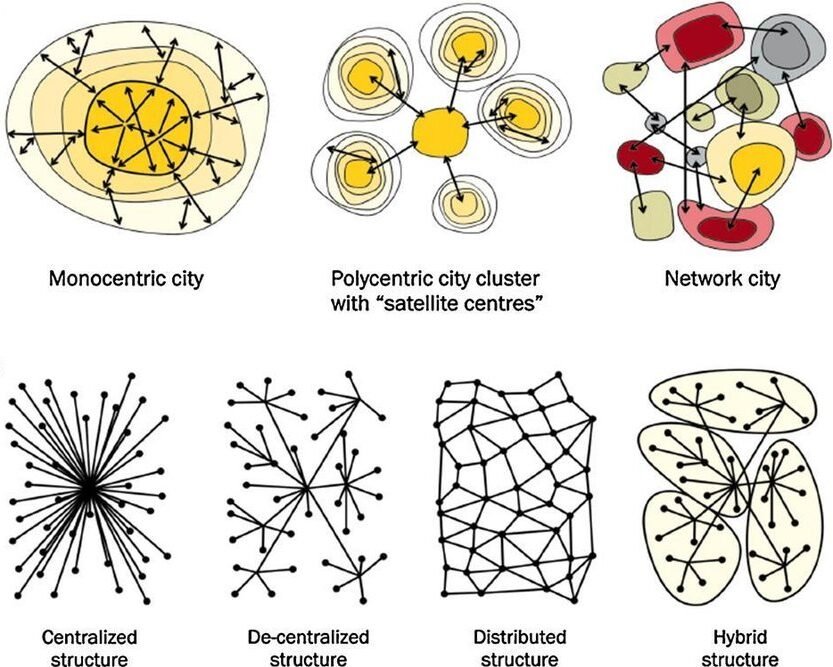


























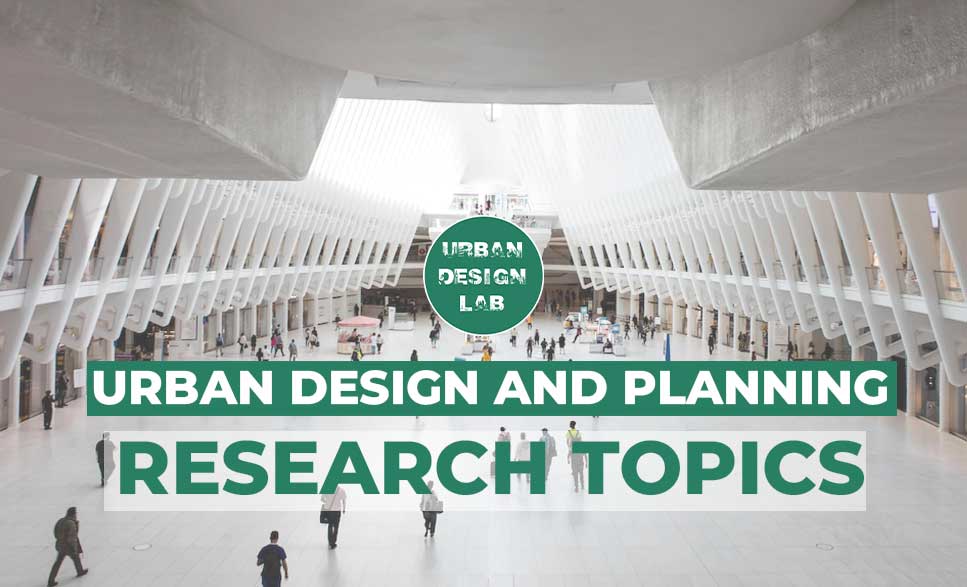
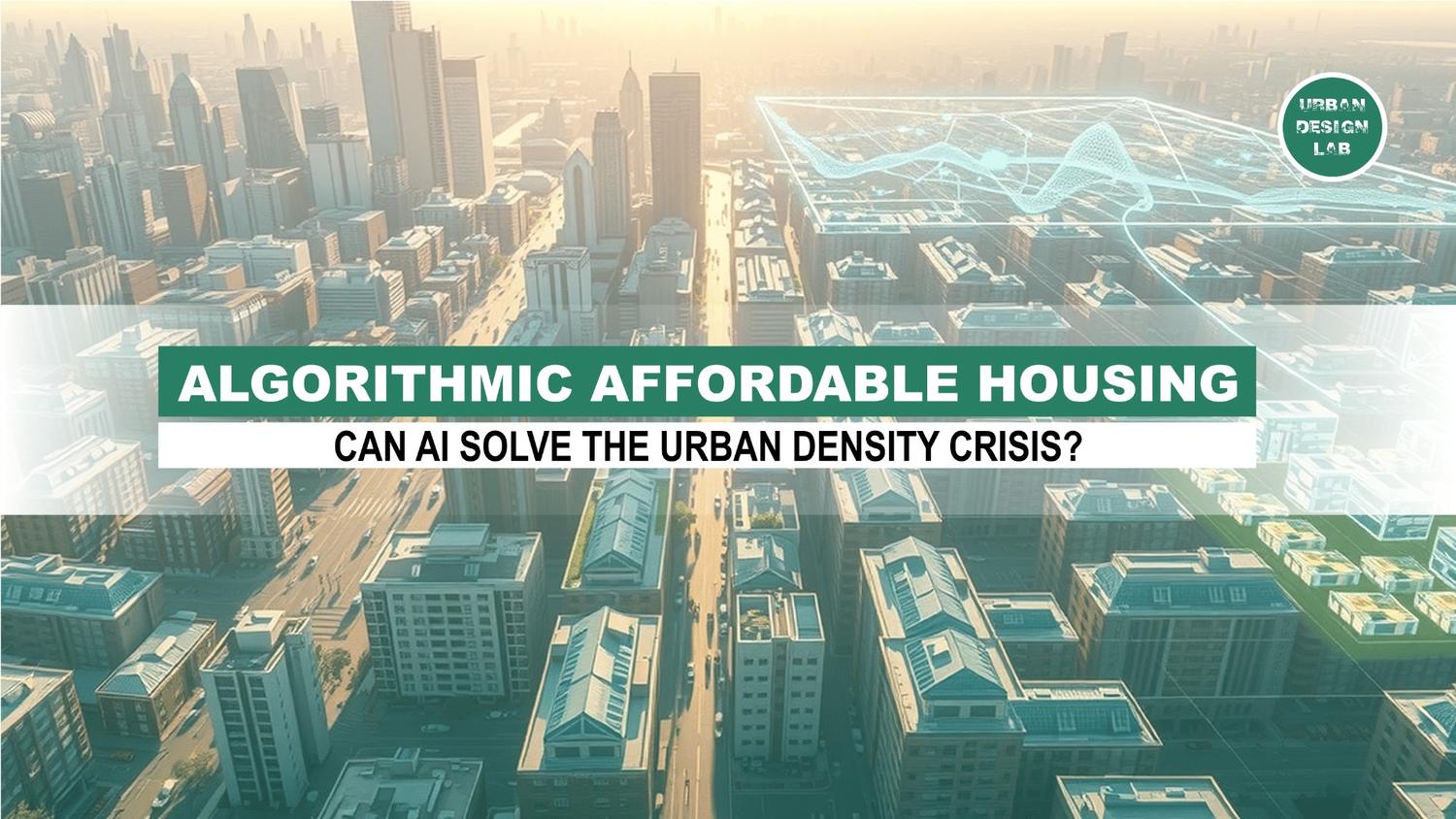


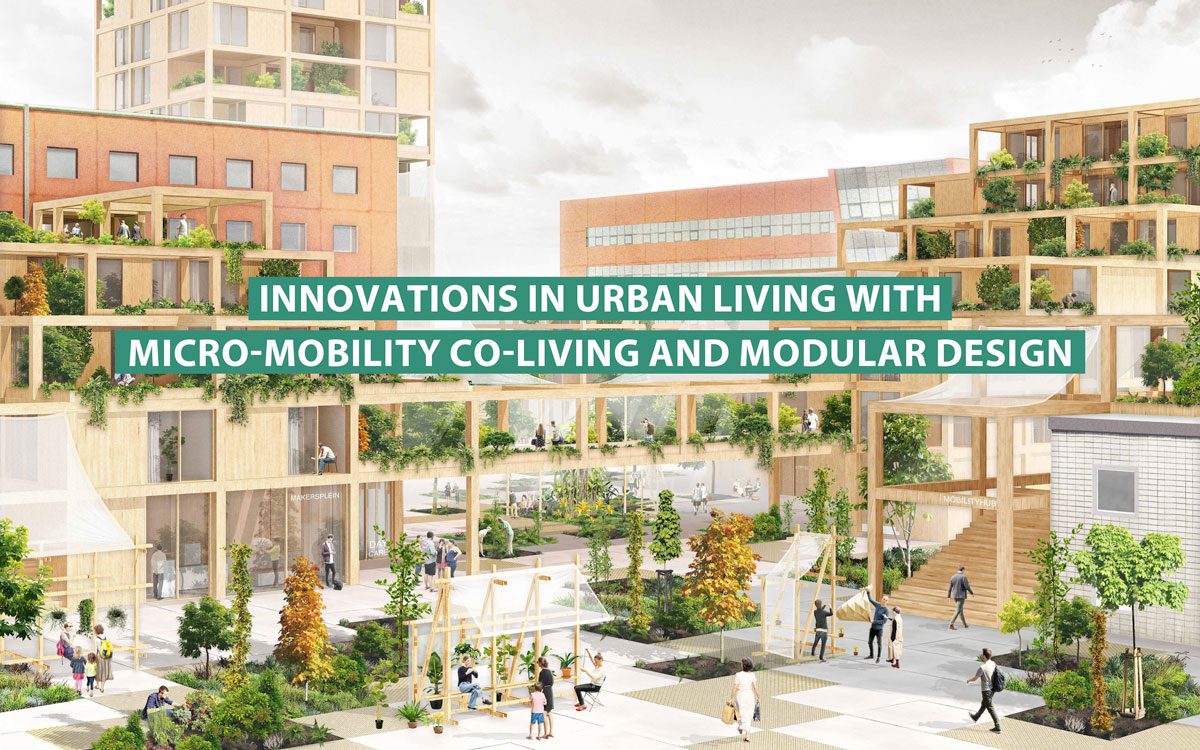
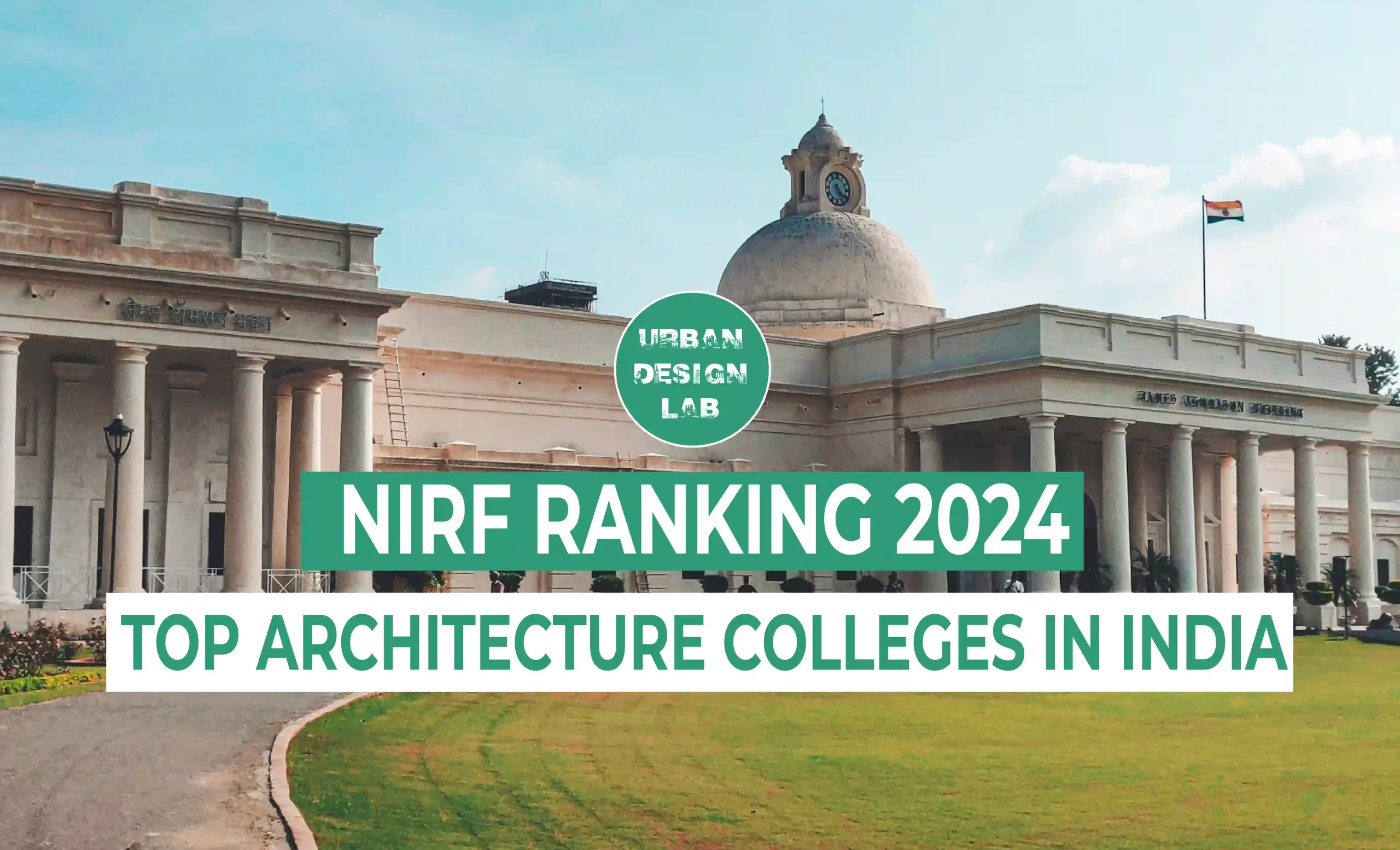




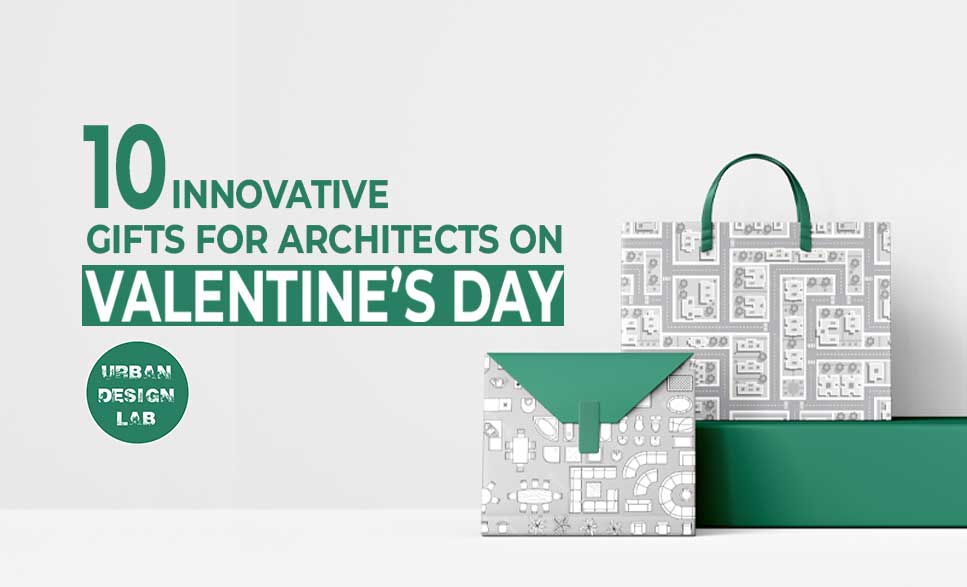
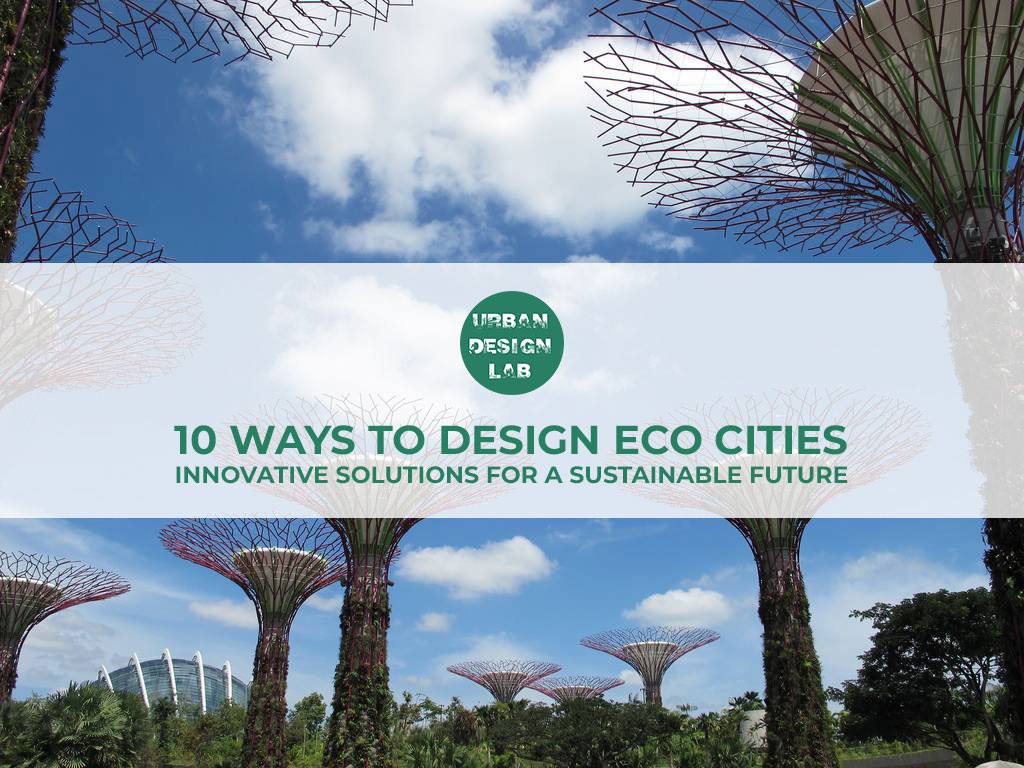



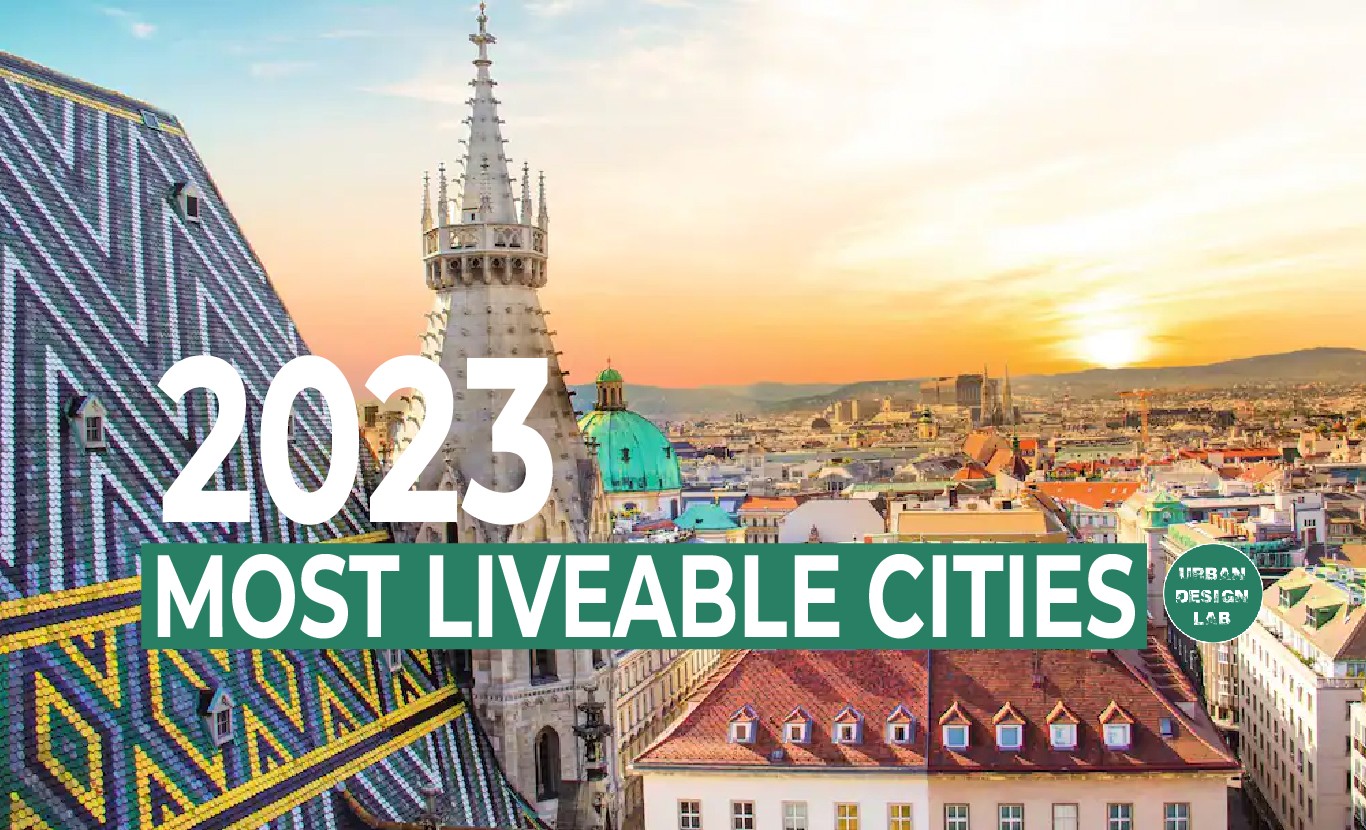





One Comment